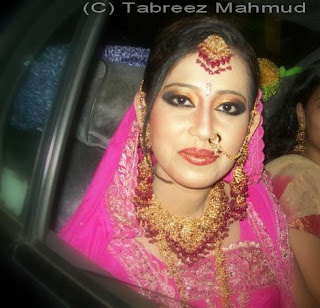Friday, May 15, 2009
Learn How to Capture Action Shots
Posted by Tabreez Mahmud Tushar at 9:44 PM 0 comments
Labels: Camera Write Times, Learn How to Capture Action Shots, Shutter Lag, Take Control Shots
How to Buy a Photo Printer
Posted by Tabreez Mahmud Tushar at 9:28 PM 0 comments
Labels: How to Buy a Photo Printer, Inkjet Printers for Photos, Photo Printers for Professionals, Photo-only Printers
How Many Megapixels Do You Really Need in a Digital Camera?
Posted by Tabreez Mahmud Tushar at 9:15 PM 0 comments
Labels: How Many Megapixels Do You Really Need in a Digital Camera?
5 Things You Need to Know About Shutter Speed
Posted by Tabreez Mahmud Tushar at 7:53 PM 0 comments
A Guide to Touching Up Your Digital Photos
Posted by Tabreez Mahmud Tushar at 7:39 PM 0 comments
Labels: A Guide to Touching Up Your Digital Photos, Blurring Effects, Play with Color, Remove Red-Eye, Resize, Rotate and Crop, Save Your Work, Sharpen Up, Start Up Your Image Editor
Display Your Photos In A Digital Photo Frame
Display Your Photos In A Digital Photo Frame Have you ever wanted to display your photos in a digital photo frame? The truth is, digital photo frames are now much more affordable than they used to be. They are a perfect way to share photos with your friends and family. Some of these frames even display videos and play music. In this article, we will look at how we can properly display photos in a digital photo frame. How To Buy A Good Photo Frame There are a few things to take note of before buying a good digital photo frame. First up, you need to take note of the resolution and aspect ratio of the frame - these can differ drastically from model to model and have a huge impact of display quality. Also, you should if the frame supports wireless functionality, which would enable you to transfer photos from your PC to the frame wirelessly. Some digital photo frames also have audio and MP3 support to allow you to pipe in music while viewing your photos. Let's take a look at some digital photo frames now. 1. Kodak W820 The first model we want to look at is the Kodak W820. This photo frame is an 8-inch frame which displays photos very nicely. it supports MP3 music and also has ample 512 MB of internal memory for your photos. The unit can also display both photos and video. 2. Digital Spectrum MF-8115 The Digital Spectrum MF-8115 digital photo frame allows you to display photos at a 800 x 600 resolution. The frame itself is15 inch and comes with 256 MB of internal memory. The unit also allows display of both photos and video. 3. HP df820 The HP df820 is an excellent digital photo frame that plays music and displays video and photos. If you have a PictBridge enabled printer, you can also send off photos to be printed to the printer directly from the frame. The frame is an 8-inch unit and displays photos very nicely. 4. Sony S-Frame DPF-V900 The Sony S-Frame DPF-V900 is a Bluetooth enabled digital photo frame. The nice thing about the frame is that it can connect up to a TV using a HDMI cable. The 9-inch frame allows you to display photos at a decent 800x480 pixel resolution. 5. Westinghouse DPF-0802 The next unit we'll look at is the Westinghouse DPF-0802 digital photo frame. The frame provides a nice MosaicView feature that allows you to display many photos in one frame. There's also a nice photo shuffle feature to display random photos, as well as 128 MB of internal memory. Conclusion Digital photo frames are becoming cheaper and more popular. I hope this article has shown you how to buy a good photo frame and get a sense of the better models out there. A good place to find quality digital photo frames can be found here. So until next time, good luck and happy shopping! |
Posted by Tabreez Mahmud Tushar at 7:17 PM 0 comments
Labels: Digital Spectrum MF-8115, Display Your Photos In A Digital Photo Frame, Kodak W820
Share Your Digital Photos Using the TV
Posted by Tabreez Mahmud Tushar at 7:05 PM 0 comments
Labels: Share Your Digital Photos Using the TV, Use a DVD Burner, Use a Photo Viewing Device, Use the Digital Camera
Saturday, May 2, 2009
5 Tips for Conserving Camera Battery Power
Posted by Tabreez Mahmud Tushar at 3:55 PM 0 comments
Labels: 5 Tips for Conserving Camera Battery Power, Don't Mix Different Types of Batteries, Keep LCD Use to a Minimum, Let Batteries Run Out, Manage Photos While Your Batteries Charge
How to Take Care of Your Digital Camera
Posted by Tabreez Mahmud Tushar at 3:34 PM 0 comments
Labels: How to Take Care of Your Digital Camera, Protect Delicate Components, Storage, Temperature








